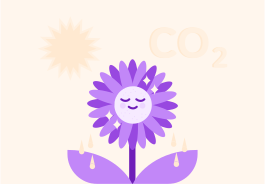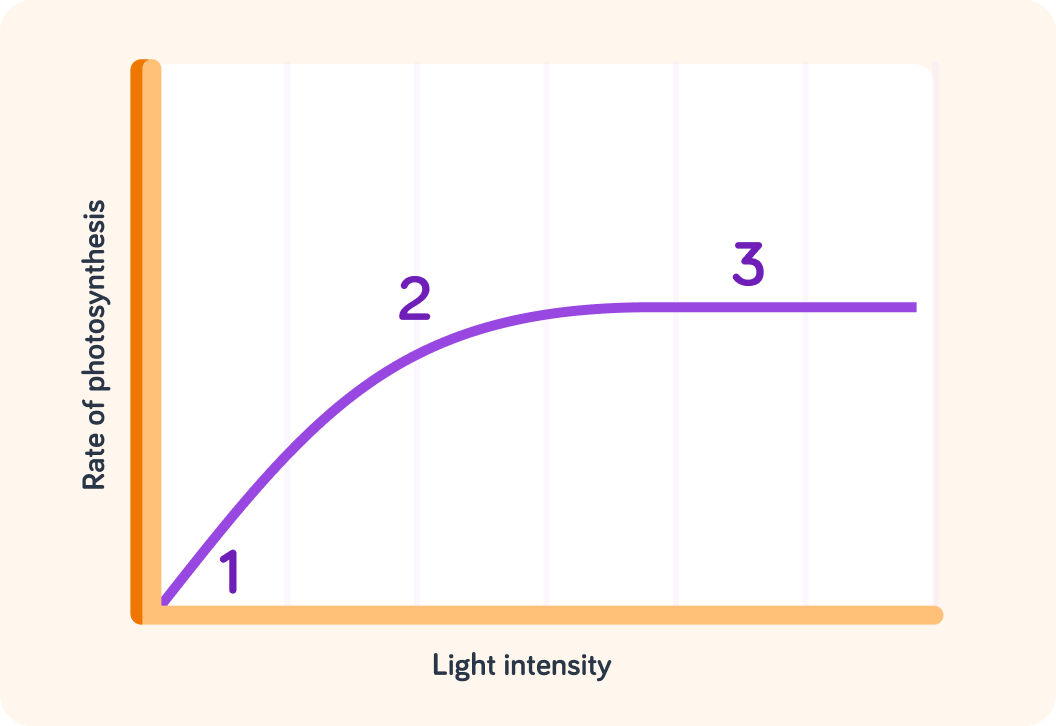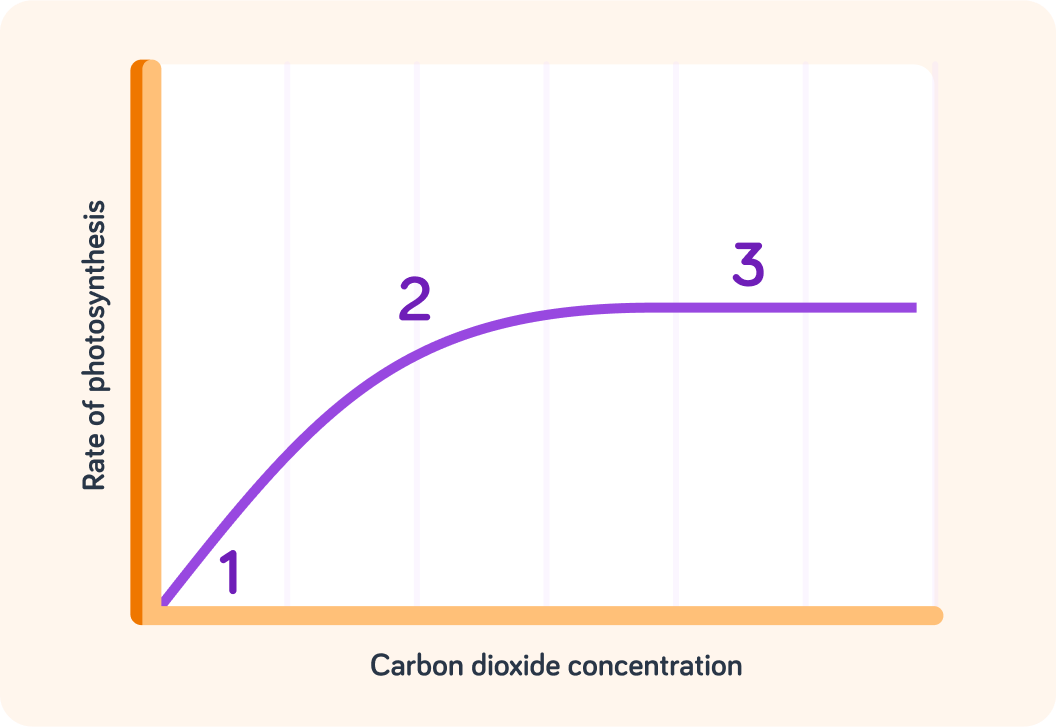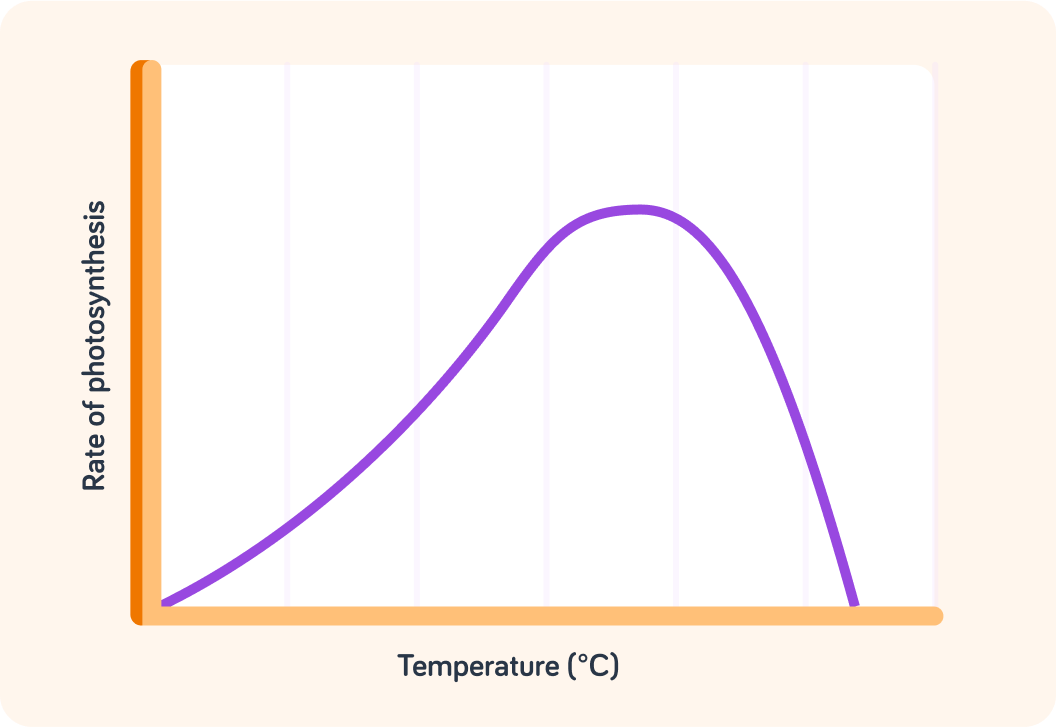YOU ARE LEARNING:
The Rate of Photosynthesis

The Rate of Photosynthesis
We will discuss the factors affecting photosynthesis and calculate its rate.
Plants need the right conditions to be able to grow at optimum speed. When one of these factors is in short supply, the rate of photosynthesis can slow down.
Name the process where plants produce their own food in the form of glucose, by reacting water and carbon dioxide.

State the form of energy required for photosynthesis to happen.

What do we call a factor that holds up the rate of photosynthesis?

Select all the limiting factors of photosynthesis.

You can select multiple answers
We may think that water is a limiting factor for photosynthesis, but it's not. Water is constantly drawn in through the roots and plants can close stomata to prevent water. What do we call the structures that open and close stomata?

Do you think a plant will photosynthesise "more" or "less" on a brighter, sunnier day?


Take a look at the graph - at first, the graph shows a line going upwards.
At these values, the rate of photosynthesis increases as the light intensity increases. Here, light intensity is the limiting factor.

After the initial increase, what happens?
A) The graph decreases. B) The graph flattens out.


The graph then flattens, and the rate of photosynthesis stays the same.
Light intensity is no longer the limiting factor. Either the carbon dioxide concentration or the temperature becomes the limiting factor.

The energy required for photosynthesis comes from sunlight.
As the light intensity increased at first, there was an increase in the rate of photosynthesis, but after a certain point, increasing light intensity does not increase the rate of photosynthesis anymore. At that point, there is a different limiting factor, like temperature or carbon dioxide.
At first, the rate of photosynthesis increases as the carbon dioxide concentration increases, shown by the upward line.
Carbon dioxide concentration is the limiting factor.

After the initial increase, what happens?
A) The graph decreases. B) The graph flattens out.


What happens to the rate of photosynthesis as the graph flattens out?
A) Photosynthesis stops. B) The rate stays the same.


Carbon dioxide intensity continues to rise, but it doesn't continue to affect the rate of photosynthesis.
So at the point where the graph flattens out, carbon dioxide concentration is no longer the limiting factor. Either light intensity or temperature becomes the limiting factor.

What happens at first as the temperature increases?
A) The rate of photosynthesis increases. B) The rate of photosynthesis deceases.


Compare the second half of the graph with the first. After a certain temperature the rate...
A) steadily decreases. B) sharply decreases.


Photosynthesis reactions are helped by enzymes. At first as the temperature increases the enzymes can work faster as they have more energy. However, after a certain temperature, enzymes stop working! They are destroyed or denatured. This causes photosynthesis to come to an abrupt stop.
